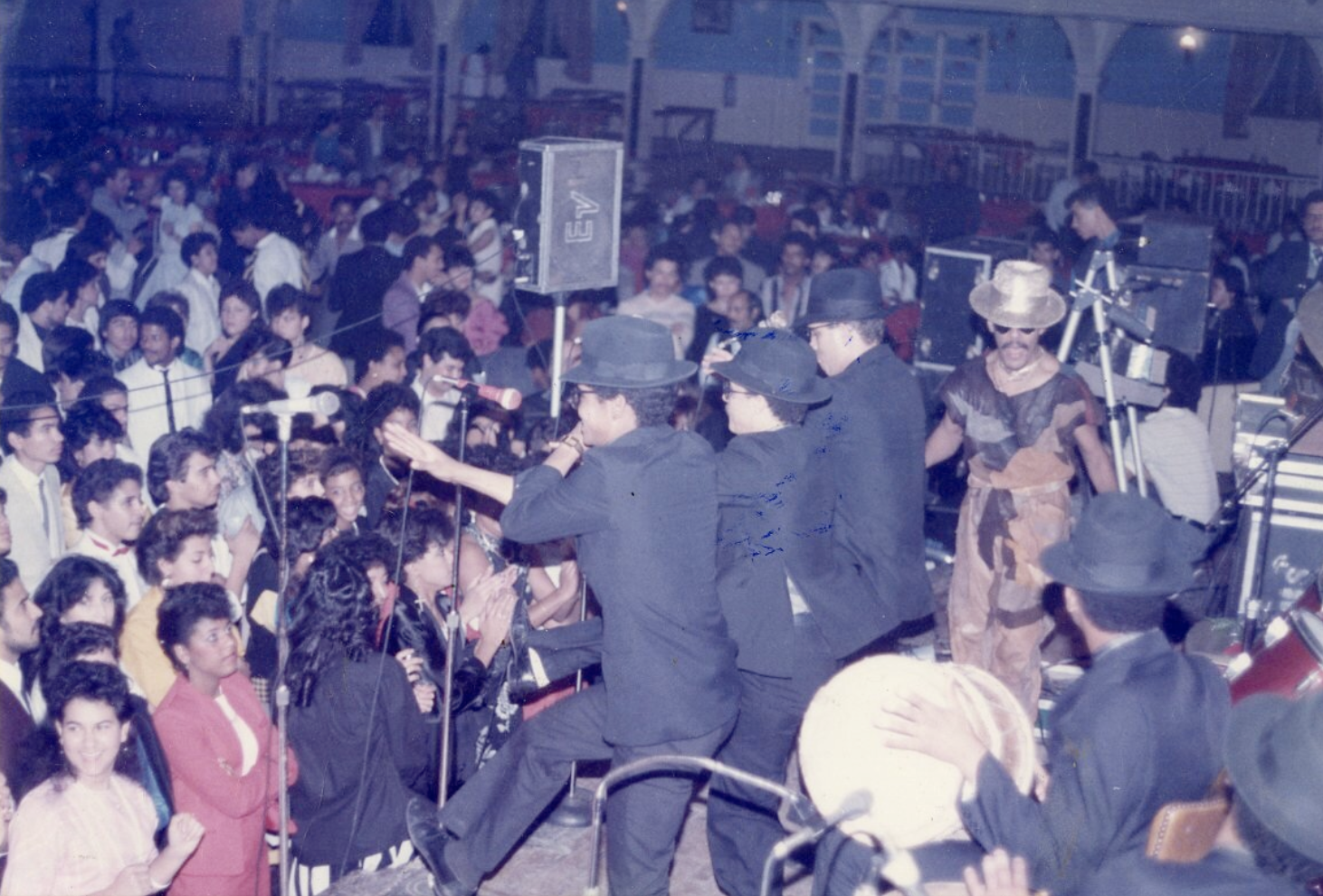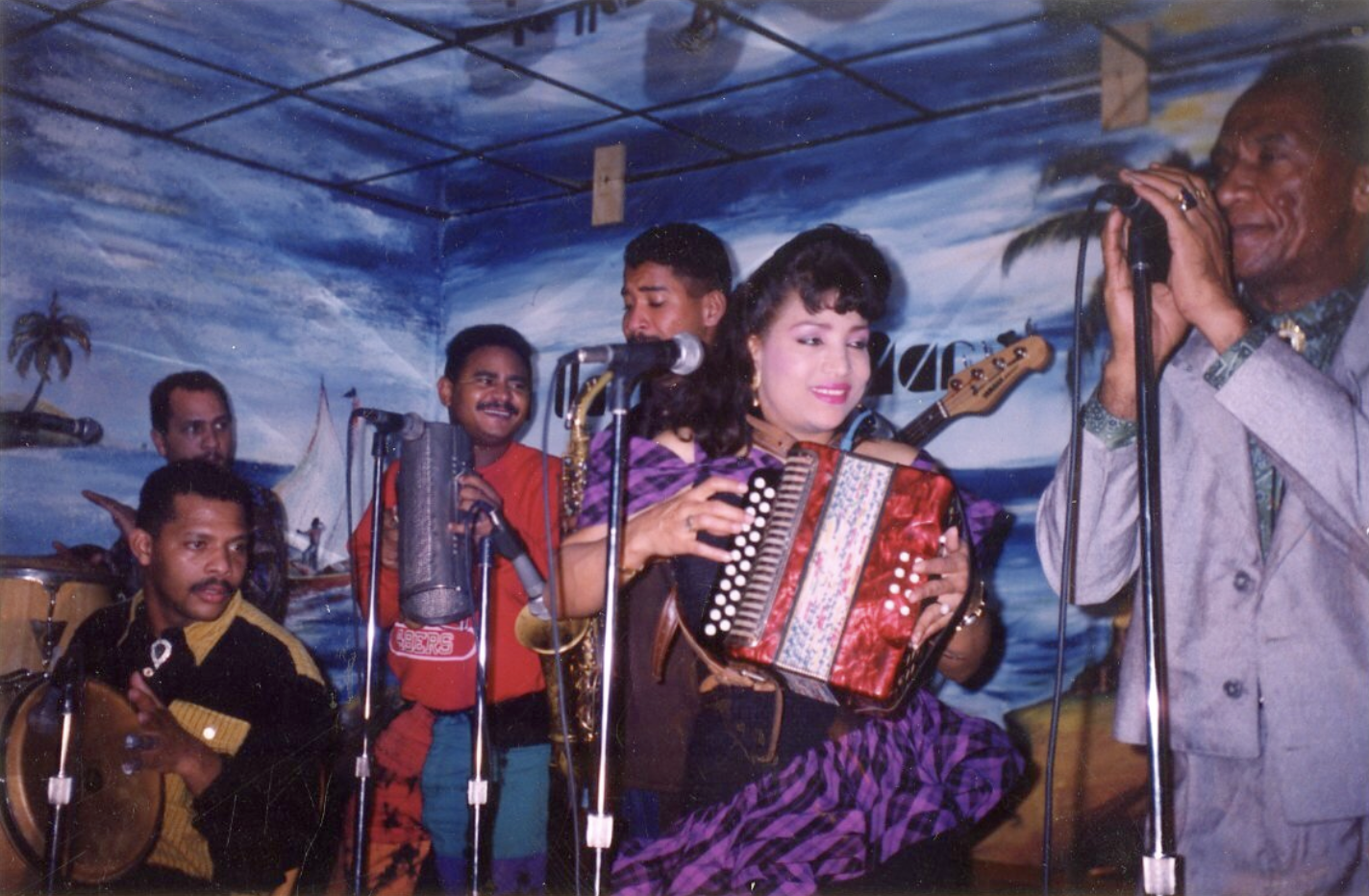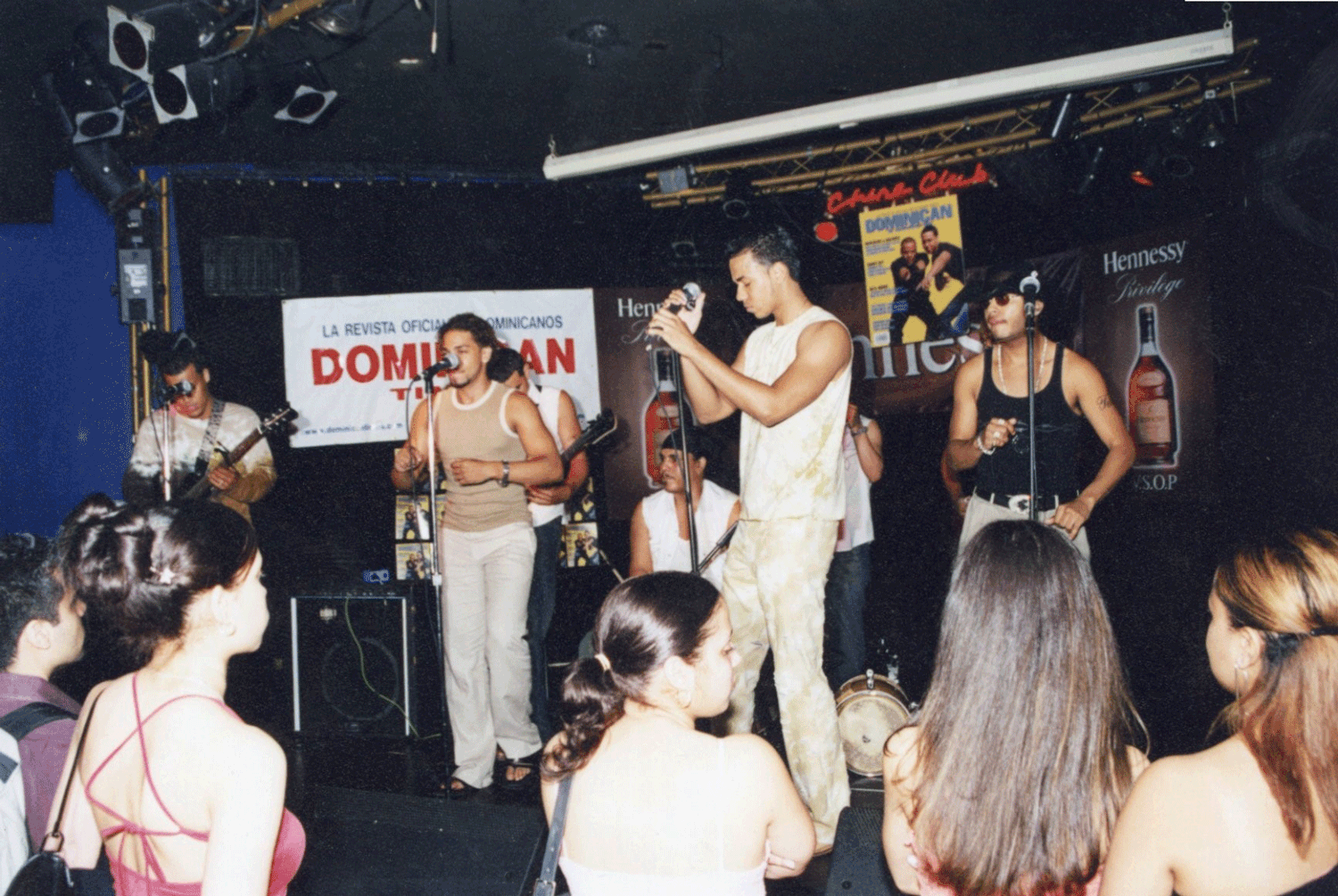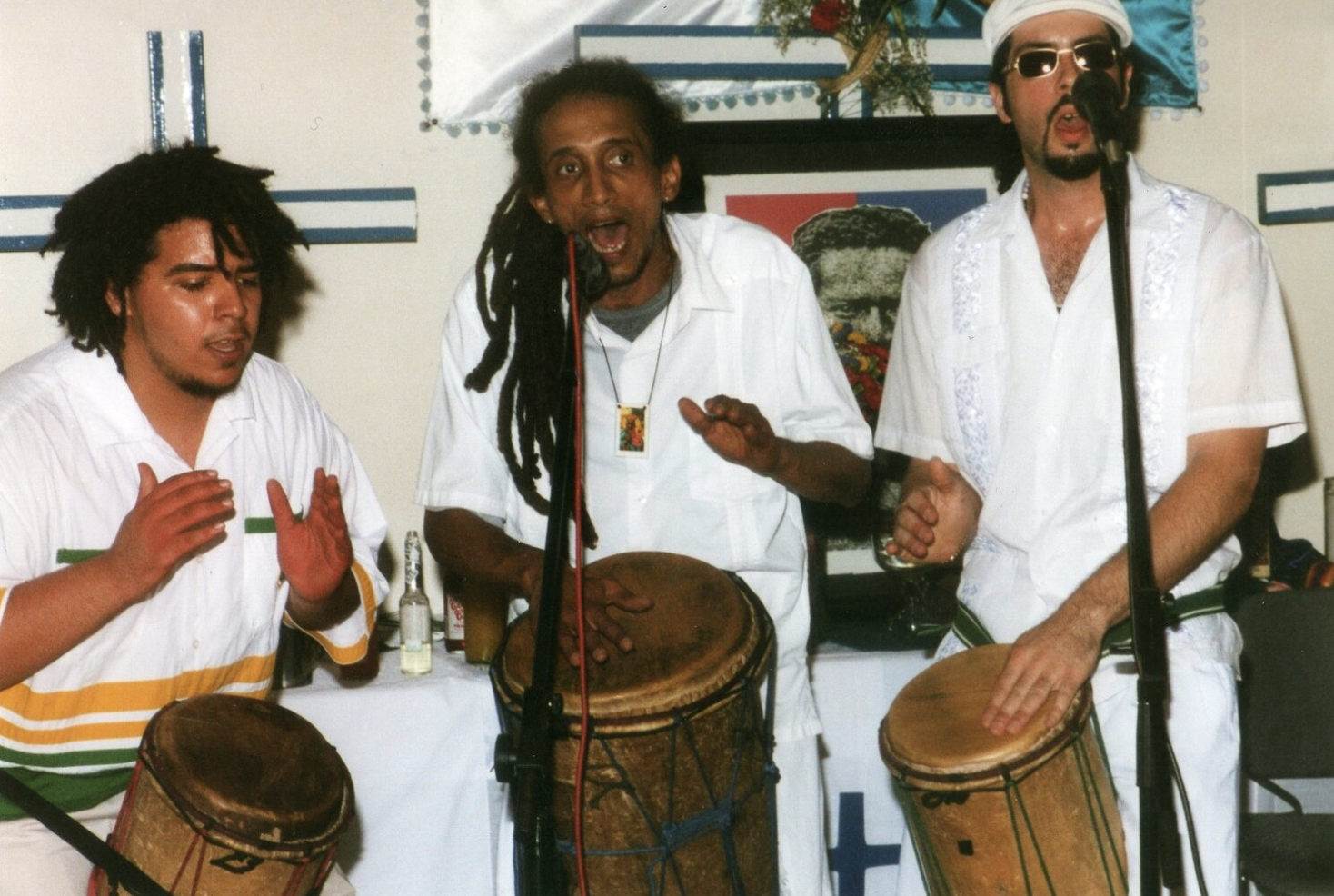A History of Dominican Music in the United States
When one thinks about Latin music and its history in the United States, the story has been traditionally generalized as “Nuestra Cosa Latina” (“Our Latin Thing”). The 1972 film expresses it as a culturally shared experience and in places like New York City, Puerto Rican culture is typically the common denominator. This historical pattern has exposed the need for a different angle on the U.S. musical landscape. Major U.S. musical movements weren’t limited to African Americans, Puerto Ricans, Cubans, and Mexicans during the 20th century. At the heart of these movements is the vibrant and rich story of these distinct communities within the United States waiting to be told.
From this perspective, Dominican contributions have largely been excluded from mainstream narratives in American music— despite being the fifth largest Latino population in the U.S. There has been a Dominican presence in cultural and musical movements from the Harlem Renaissance to the mambo dance craze and the rise of salsa. Yet online platforms, documentaries, and exhibitions have continuously produced pan-Latino content limiting the inclusion of Dominican music to merengue and bachata. There were also few open access resources for the public and students that provide a historical context on the history of Dominican music and a critical perspective to how our contributions are part of America’s cultural history.
In fact, central to the trajectory of Dominican music are current international and local trends. By now, bachata’s popularity with known acts such as Juan Luis Guerra, Romeo Santos, and Prince Royce has introduced the genre around the globe. The rise of Dominican dembow through the mainstream success of El Alfa has given the movement a sense of validation and prominence. Likewise, the popularity of Dominican roots music has grown internationally with artists like Vicente García, whose fusion sound won a Latin Grammy for Best New Artist in 2017. In New York City, Yasser Tejeda and Palotré have made in-roads with introducing Dominican folkloric rhythms to a broader American audience, and Legacy Women, an Afro-Caribbean women’s roots ensemble, is building off a legacy of Afro-Dominican ensembles such as Claudio Fortunato y sus Guedeses, Asa Difé, and Pa'lo Monte', who all laid the foundation for more groups to enjoy the opportunities to perform today. The mainstream visibility and crossover success of some of these artists and genres belongs to a historical precedent that has remained largely unknown until now. History leaves no doubt about its relevance today with the growing appeal and recognition of Dominican music outside of the Dominican Republic and its diaspora.
Last month, the CUNY Dominican Studies Institute (CUNY DSI) launched A History of Dominican Music in the United States, the first open-source digital platform narrating the history of Dominican music as it developed during the past century in the United States. This platform was developed over the course of three years when the CUNY DSI won a $100,000 grant from the National Endowment for the Humanities (NEH) in 2017. We received the news in December of 2016 and we were all excited because everyone contributed to conceptualizing this project. Isabelia Herrera was the grant writer and researcher who I worked closely with prior to us submitting the proposal. She shared her reaction to the news: “I was so excited because it was the culmination of all the collaborative effort and after six years to finally pull it off it was great to see the website.”
The project is led by CUNY DSI Director Ramona Hernández, professor of sociology at City College’s Colin Powell School for Civic and Global Leadership. As a librarian and researcher of Dominican music, my role was to identify photographs and other materials in the CUNY DSI archival collections, as well as selecting the music and artists to create historical narratives. We also reached out to individual families and Dominican musicians who donated from their personal archives photos, video, audio recordings, interviews, and other memorabilia. A committee of advisors also lent their expertise on Dominican music throughout the length of the project, including Dr. Paul Austerlitz, one of the academic advisors of the project and, is currently, a visiting research scholar at CUNY DSI. The team of researchers grew over the years, ranging from doctoral students to undergraduates who contributed to the writing and investigating of the different historical eras of Dominican music.
To further gather vital information and publicity for this project, We organized a series of panel discussions between 2018 and 2019. The first of these three panel discussions was “Conversations in Dominican Music: Bachata in the United States,” where participants shared information on their experience on Bachata in the U.S. In an article published in Voices of N.Y. Bachata producer Pedro “sP” Polanco was quoted on how the Washington Heights’ bachata was “exported” to the Bronx.
“They wanted to feel like back home. For that reason, the music, the bachata, never evolved while in Washington Heights. It was still a very Dominican mentality. But when we Dominicans started to move to the Bronx, where we did not have that close-knit Dominican community, we had to find ourselves in communities of other cultures, predominantly the Black and Puerto Rican cultures. We could not be ‘too’ Dominican.”
A second panel discussion, “Music and the (Re)making of Identities in the Diaspora: Comparative Study of Haitians & Dominicans,” was co-sponsored by CUNY DSI in collaboration with the CUNY Haitian Studies Institute and captured the experiences of Dominican and Haitian musical identity in New York City. The third event of the series, “U.S. Dominican Women: Music and Legacy” was a roundtable discussion between artists and academic scholars honoring Dominican women's genre-altering influence in contemporary Dominican music in the U.S.
A History of Dominican Music in the United States features 100 years of Dominican music in the United States, from 1910 to 2010. The interactive website includes a map section documenting historical and contemporary locations relevant to the development of Dominican music in the U.S. Users can explore the genre guides describing four key musical types: merengue, bachata, Afro-Dominican music, and Dominican classical music. It also includes educational profiles for teachers and educators with instructional resources to create lesson plans. The educational profiles feature Eduardo Brito famed baritone singer from the 1930s; The Malagón Sisters, a trio that performed on Ed Sullivan Show on June 9, 1957; Monica Boyar a cabaret singer and actress who performed in the 1939 NY World's Fair; Proyecto Uno, pioneers of the Merenhouse movement in the 1990s; and Milly Quezada, lead vocalist of Milly y los Vecinos, a group that established her reputation as the "Queen of Merengue." These lessons are tailored for students across disciplines on Dominican music and makes it available at no cost to educators. Lastly, people can fill out forms to share their own stories and photos around Dominican music.
One of the more exciting resources available is the vast image archive from the CUNY DSI archives and library collections. The site houses an array of materials (photographs, flyers, album covers, newspaper clippings, etc.) that highlight Dominican musical history and legacy in the U.S. Simultaneously, many of the images that were selected reflect the contributions that Dominican musicians have made to the development of Latin music in the U.S. while demonstrating the connections with prominent Puerto Rican and Cuban musicians and depicting a much wider angle to Latin music scene in New York City. The platform contains audio recordings like short clips of songs and interviews from as early as 1928 until the present. The selection was made based on Dominican artist's impact on the development of Dominican music in the U.S. Many of these musicians and artists are mentioned throughout the site making it easier for users to find information and resources about them. The site also includes a comprehensive bibliography that provides a list of books, book chapters, dissertations, theses, as well as journal, newspaper, and magazine articles dealing with the history of Dominican music in the United States.




The digital platform exists and will continue to grow with the contributions of the community moving forward. We have much more to gain if we can deepen the archive with your experiences with Dominican music in the United States. We are making history every day and it’s important for future generations to have access to these important records on this platform. Our hope is that users are able to engage interactively and draw inspiration from these resources. Any effort to save our history will contribute to the remarkable legacy of Dominican musicians and their contributions to the cultural life in the United States.
Jhensen Ortiz is a Queens native Dominican librarian, archivist, researcher, and writer. He currently works as a librarian at the CUNY Dominican Studies Institute Archives and Library at The City College of New York. His present academic and research interests are centered on collection development, history of the Dominican community in the U.S., audiovisual media, and digital library collections. He holds a B.A. in History from the City College of New York; and a dual master degree in Library Science and History with a certificate in Archives and the Preservation of Cultural Materials from Queens College (CUNY).
Image credits (in order of appearance)
*All photos courtesy of the CUNY Dominican Studies Institute (DSI), unless specified otherwise.
Home page: Ballet Quisqueya with Primitivo Santos and his Orchestra at the Trocadero Club, February 27, 1975. Credit: CUNY DSI Archives; Normandía Maldonado Collection
Collecting Dominican Music in the United States. Flyer, 2017.
CUNY DSI staff Natalie Studt and Luanna Polanco during Collecting Dominican Music Memories event at the Bronx Music Heritage Center on July 6, 2017.
Collecting Dominican Music in the United States. Flyer, 2018.
Jhensen Ortiz with Jose Mateo III grandson of Joseito Mateo (King of Merengue) during Collecting Dominican music in the U.S. event at Centro Civico Cultural Dominicano on April 27, 2018.
“Conversations in Dominican Music: Bachata in the United States.” Flyer, 2018.
“Music and the (Re)Making of Identities in the Diaspora: Comparative Study of Haitians & Dominicans.” Flyer, 2018.
“U.S. Dominican Women: Music and Legacy.” Flyer, 2019.
Aramis Camilo and La Organización Secreta performing in Providence, RI, ca. 1980s. Credit: CUNY DSI Archives; Zunilda Fondeur Collection
Maria Diaz y su Conjunto Típico, ca. 1990s. Credit: CUNY DSI Archives; Zunilda Fondeur Collection
Aventura performing at the China Club for Spring 2002 issue cover release party of Dominican Times Magazine. Credit: CUNY DSI Archives; Small Collections (DTM)
Kwesi Ernesto Rodríguez (center) of La 21 División playing at First Messianic Festival in Honor of Olivorio Mateo, June 29, 2003. Credit: CUNY Dominican Studies Institute Library








